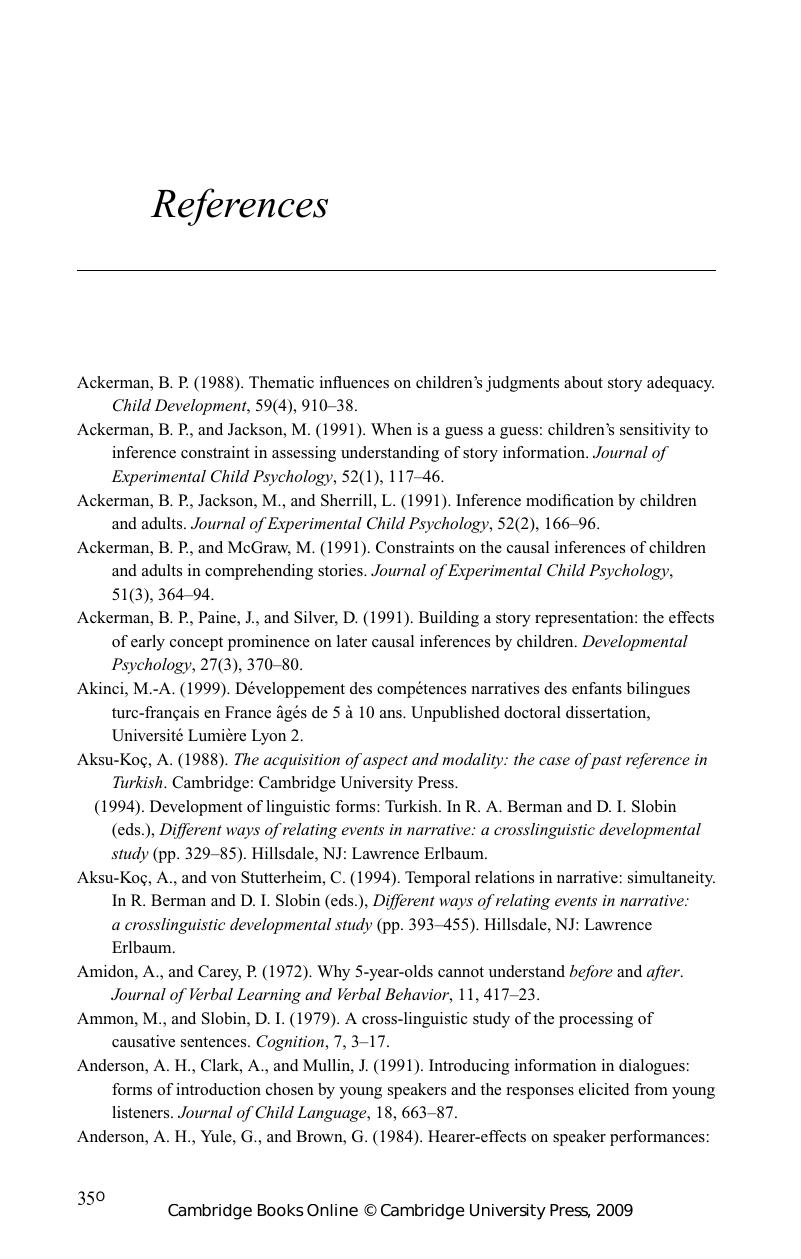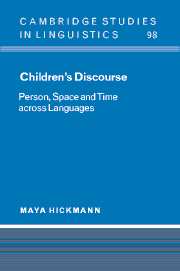References
Published online by Cambridge University Press: 22 September 2009
Summary

- Type
- Chapter
- Information
- Children's DiscoursePerson, Space and Time across Languages, pp. 350 - 382Publisher: Cambridge University PressPrint publication year: 2002



